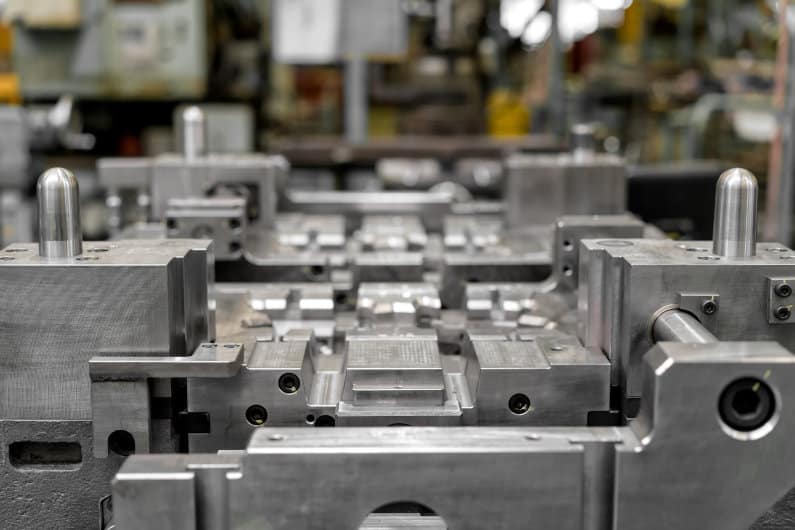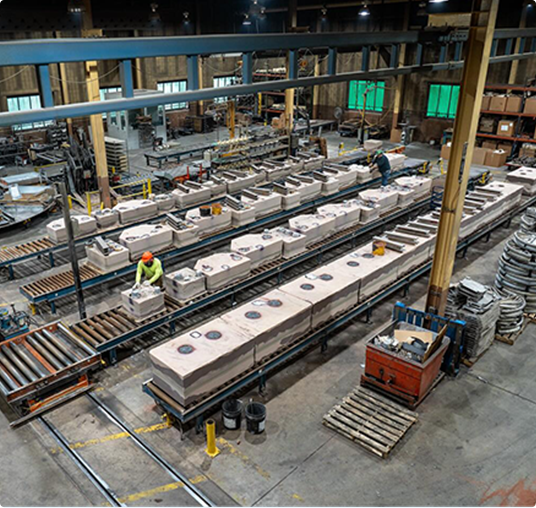Sustainability practices in modern Aluminum Foundries for energy-efficient production
Understanding the Role of Aluminum Foundry in Creating High-Quality Metal Products
Aluminum shops are important in the production of high-grade metal items. They employ numerous casting strategies, such as sand and pass away casting, to achieve precision and durability. With rigorous high quality control actions in position, these facilities guarantee that their products fulfill sector standards. As sectors evolve, the role of Aluminum shops continues to adjust. This questions about future developments and sustainability methods that may redefine their effect.
The Aluminum Spreading Refine: Techniques and Innovations
The Aluminum casting procedure has developed significantly, integrating numerous techniques and advancements that improve effectiveness and product top quality. Traditionally, approaches such as sand spreading and pass away spreading were primary; nevertheless, improvements have actually presented processes like investment casting and low-pressure die spreading. These innovations enable producers to achieve intricate styles and tighter resistances, lowering product waste and boosting general efficiency.
The combination of computer-aided layout (CAD) and simulation software application permits for more accurate modeling and testing, ensuring that possible problems are identified early in the manufacturing cycle. Aluminum Foundry. Additionally, advancements in alloy solutions cause improved mechanical properties and rust resistance
These developments not just improve manufacturing but additionally promote sustainability by decreasing energy consumption and exhausts. As the industry remains to welcome new innovations, the Aluminum spreading process remains a crucial part in producing top notch steel products that satisfy varied market needs.
Applications of Aluminum in Various Industries
Light weight aluminum's flexibility and positive properties make it a useful product throughout different markets. In the vehicle market, Aluminum is extensively made use of for its lightweight qualities, contributing to enhanced fuel effectiveness and performance. The aerospace market likewise advantages, as aluminum's high strength-to-weight proportion improves aircraft style while preserving safety and security criteria.
In building, Aluminum is favored for its longevity and resistance to corrosion, making it optimal for home window frameworks, roofing, and structural components. The packaging industry leverages light weight aluminum's non-toxic nature and recyclability, specifically in food and drink containers, guaranteeing security and sustainability.
Additionally, the electric market employs Aluminum for its outstanding conductivity in circuitry and transmission lines. The customer goods market makes use of Aluminum in products ranging from kitchen tools to electronic devices, highlighting its adaptability. Aluminum plays a crucial role in boosting performance, efficiency, and sustainability throughout diverse applications.
Advantages of Using Aluminum Over Various Other Metals
While several steels are employed in numerous applications, Aluminum stands apart due to its one-of-a-kind combination of properties that provide a number of advantages over various other products. Its light-weight nature substantially minimizes transport costs and energy consumption, making it suitable for sectors such as automobile and aerospace. Aluminum's outstanding rust resistance boosts toughness, prolonging the life of items and minimizing maintenance demands. Additionally, it shows high thermal and electric conductivity, making it appropriate for electric and thermal management applications.
The metal's malleability enables complex layouts and complicated forms, giving adaptability in making procedures. Furthermore, Aluminum is 100% recyclable without loss of quality, promoting sustainability and minimizing ecological influence. Aluminum Foundry. These characteristics, incorporated with its fairly affordable contrasted to other steels, placement Aluminum as a preferred selection throughout various industries. Generally, the benefits of Aluminum contribute to its increasing popularity in the production of premium steel items

Quality Assurance Actions in Aluminum Foundries
Quality assurance measures play a necessary role in the Aluminum Foundry process, guaranteeing that the end products meet rigorous sector standards and consumer expectations. These measures usually start with product assessment, where raw Aluminum is evaluated for pureness and make-up. Once the spreading procedure starts, temperature level control is essential; keeping excellent molten steel temperatures prevents defects such as porosity and shrinkage.
Furthermore, non-destructive screening (NDT) methods, consisting of ultrasonic and radiographic inspections, are employed to detect internal imperfections without damaging the castings. Visual inspections are also conducted at various stages to recognize surface area imperfections.
In addition, adherence to well-known top quality administration systems, such as ISO criteria, is important for maintaining uniformity and traceability throughout the manufacturing procedure. Regular audits and employee training on top quality standards add to a general culture of quality, ensuring that the items not only meet yet exceed customer expectations in efficiency and longevity.
The Future of Aluminum Foundries: Patterns and Sustainability
As the Aluminum Foundry industry evolves, emerging fads and a focus on sustainability are improving its landscape. Increasing demand for durable and lightweight products in industries like vehicle and aerospace drives advancement in Aluminum spreading techniques. Advanced modern technologies, such as expert system and automation, are improving manufacturing performance and accuracy while reducing Resources waste.
Sustainability is ending up being a vital concern, prompting factories to carry out environmentally friendly practices, including recycling Aluminum scrap and using renewable resource resources. The change in the direction of circular economy concepts urges foundries to minimize environmental influence while satisfying customer assumptions for sustainable items.
Furthermore, regulative stress are pushing the market towards cleaner operations, cultivating partnership between makers and environmental organizations. As these trends converge, the future of Aluminum foundries will likely be identified by a commitment to sustainability, high quality, and efficiency, guaranteeing their importance in an open market.
Frequently Asked Questions
What Are the Environmental Impacts of Aluminum Foundries?
Aluminum factories add to ecological effects with power usage, greenhouse gas discharges, and possible air and water contamination. Furthermore, mining bauxite for try here Aluminum can cause habitat destruction and dirt deterioration, impacting regional environments.

How Do Foundries Make Sure Worker Security During Production?
Factories carry out strenuous safety methods, including protective tools, ventilation systems, and web link regular training. They carry out danger assessments and maintain safety standards to lessen hazards, guaranteeing a safer working setting for employees throughout the production process.
What Certifications Should an Aluminum Foundry Have?
A light weight aluminum Foundry must have qualifications such as ISO 9001 for quality management, ISO 14001 for environmental administration, and OSHA compliance for safety requirements. These qualifications ensure adherence to sector policies and commitment to top quality and security techniques.
How Does Aluminum Recycling Affect Foundry Procedures?
Aluminum recycling greatly boosts Foundry operations by giving a cost-effective basic material source, lowering energy usage, and minimizing ecological impact - Wisconsin Aluminum Foundry. It likewise urges sustainable techniques, allowing factories to preserve competition in a quickly developing market
What Are Typical Issues in Aluminum Castings?
Usual defects in Aluminum spreadings include porosity, contraction, additions, and surface area imperfections. These concerns can emerge from incorrect mold and mildew style, poor putting strategies, or contamination throughout the melting and casting processes, influencing overall product high quality.
